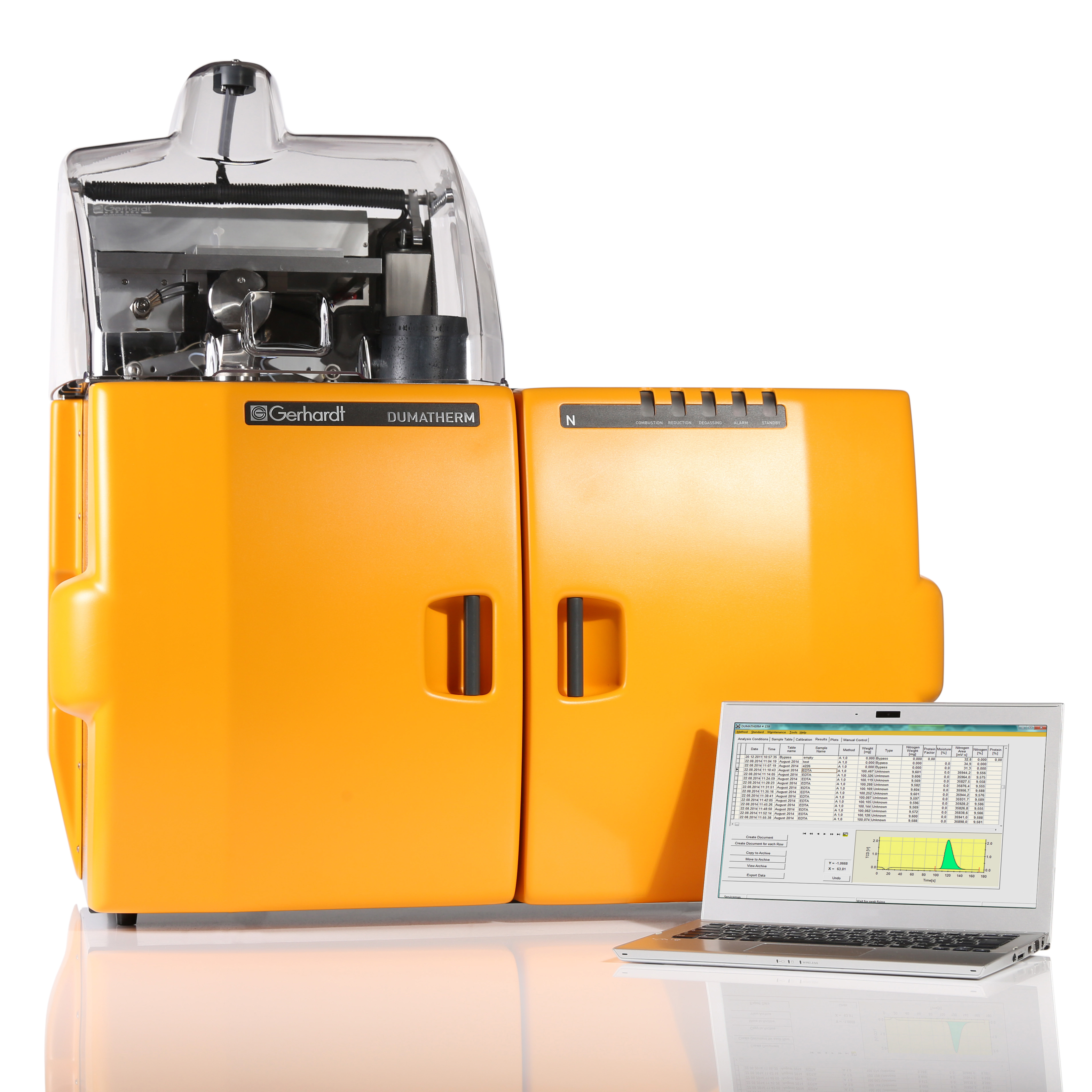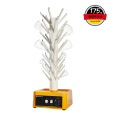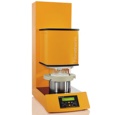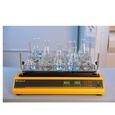方案详情
文
浮萍做为蛋白饲料对肉鸡的营养价值-粗蛋白、氨基酸和磷的消化率Nutritional Value of Duckweed as Protein Feed for Broiler Chickens—Digestibility of Crude Protein, Amino Acids and Phosphorus
方案详情

浮萍做为蛋白饲料对肉鸡的营养价值-粗蛋白、氨基酸和磷的消化率Nutritional Value of Duckweed as Protein Feed for Broiler Chickens—Digestibility of Crude Protein, Amino Acids and Phosphorusanimals 2 of 11Animals 2023, 13,130 Dusel , G.; Bog, M.; Devlamynck,R.;Ulbrich, A.; Olfs , H.-W.; Westendarp,H. Nutritional Value of Duckweed as Protein Feed for Broi l er Chickens—Digestibi l ity of Crude Protein, Amino Ac i ds and Phosphorus . Animals 2023,13,130.https://doi.org/10.3390/ani13010130 Academic Editor: Ili a s Giannenas Received: 13 December 2022 Revised: 25 December 2022 Accepted: 26 December 2022 Published: 29 December 2022 Copyright: @ 2022 by the authors.L i censee MDPI, Basel, Switzerland.This article is an open access article distr i buted under the terms and conditions of the Creative Commons Attribution (CC BY ) l icense (https://creativecommons.org/licenses/by/4.0/) Faculty of Agriculture and Environmental Sciences, University of Rostock, 18059 Rostock, Germany 2 Faculty of Agricultural Sciences and Landscape Architecture, University of Applied Sciences Osnabruck,49090 Osnabrick,Germany 3 Life Science and Engineering, University of Applied Sciences Bingen, 55411 Bingen am Rhein, Germany 4 Inst i tute of Botany and Landscape Ecology, University of Greifswald, 17489 Greifswald , Germany 5 Inagro vzw, 8800 Rumbeke-Beitem, Belgium Correspondence: johannes.demann@uni -rostock.de (J.D.); h.westendarp@hs-osnabrueck.de (H.W.);Tel.: +49-541-969-5055 (H.W.) Simple Summary: An increasing global population will l ead to an i ncreased demand for protein and a protein deficit. The production of soy, the most common protein source in animal nutrition,is often associated with deforestation and long transport distances. In this context, duckweed can be considered an alternative protein source for anima l nutri t ion. The term duckweed describes a group of small plants floating on the water surface with sizes up to 1.5 cm. Three different duckweed batches consisting of different species were tested as feed for broiler chickens. They showed different impacts on feed intake, animal growth, and digestibility. Digestibi l ity describes the share of nutrients resorbed within the digestive system. Possible compounds that inhibited the digestibility were identified. The results suggest that the nutritional value of duckweed and its influence on animal performance are variable. Hence, a stable duckweed biomass qual i ty adapted to the requirements of broilers is needed. Abstract: Duckweed is gaining attention i n anima l nutrition and is considered as a potential alterna-tive protein source for broiler chickens. In order to evaluate t he nutritional value of duckweed, three individua l batches were inves t igated. They consisted of a mixture of Lemna minuta and Lemna minor (A, 17.5% crude protein), Spirodela polyrhiza (B, 24.6% crude protein) and Lemna obscura (C,37.0%crude protein). Treatment diets contained 50% batch A, 50% batch B, and 25, 50 and 75% of batch C.Al l diets were fed to broi l er chickens (Ross 308) from an age of 21 to 27 days. Diets with a share of 50and 75% of batch C led to decreased feed intake (109.3 and 74.9 g/day, respectively) compared to the control . Standardized ilea l digestibility of crude protein and amino acids differed significantly between duckweed batches, at values for methionine between 49.9 and 90.4%. For all amino acid s ,batch A consistently had the lowest and batch C the highest digestibility. Batches had different tannin contents of 2943, 2890 and 303 mg/kg for batches A, B and C, respectively. The apparent i l eal digestibility of phosphorus differed signi f icantly between all batches (50.8-78.9%). Duckweed can be used as a protein feed for broiler chickens. However, a defined and stable biomass composition optimized for the requirements of broiler chickens is needed. Keywords: tannin; phytate; animal performance; feed intake; water binding capacity 1. Introduction United Nations [1] projections estimate that the global population will increase to 9.7 billion by 2050, leading to an increasing demand for animal protein and a global protein gap [2]. The European Union is already dependent on imports of protein-rich feedstuffs,mainly from America, in the form of soybean meal due to i ts high protein content and high levels of limiting amino acids [3]. The decoupling of land farming and l ivestock production causes severa l environmental and sustainabi l ity issues, such as deforestation in South America or nutrient surpluses in areas with intense l ivestock production [3,4].However, the growth potential for common plant proteins is l imited in the segment of complete feed [3]. In this context, duckweed can be considered an alternative protein source for broiler nutrition. The t erm duckweed describes a group of flowering aquatic plants including the five genera of Lemna L., Spirodela Schleid., Landoltia Les & Crawford, Wolffia Horkel ex Schleid. and Wolffiella Hegelm., with 36 different species [5]. Duckweed is considered the fastest-growing flowering plant with almost exponential growth [5]. Plant composition (e.g., crude protein or phosphorus content) differs between species and can be influenced by cultivation conditions, particularly cultivation medium [6,7]. High nutrient availability and especially ammonium and nitrate levels can increase crude protein (CP) contents by up to 44% in dry matter (DM) [8]. On the other hand, the amino acid distribution is a typical characteristic of i ndividual species and is almost independent of environmental influences [9]. The nutritional value of duckweed has already been confirmed in severa l experiments with broiler chickens. However, they show some contrasting effects of using duckweed in complete diets on growth and especially feed intake [10,11]. The reasons for these effects have not yet been investigated . A possible influence could be the varying digestibi l ity of the nutrients, in particular phosphorus (P), CP and amino acids, which has not been studied for broiler chickens yet. Tannins, which can bind proteins and cause reduced digestibility,have been detected i n some studies [12,13]. However, their appearance in duckweed could not be related to any anti-nutritional effect and decreased amino acid digestibility. The aim of this research was to investigate the effec t of different duckweed batches as protein feed on zootechnical parameters, such as feed intake and body weight, as well as the ileal digestibility of amino acids and phosphorus in broiler chickens. The batches consisted of different duckweed species and are characterized by different chemical compositions.For one batch, three di f ferent ratios in the final diet were investigated. 2. Materials and Methods 2.1. Birds and Management In total, 108 one-day-old male Ross 308 broiler chickens were obtained from Probroed & Sloot (Vreden, Germany) and raised with commercial broiler diets. On day 18, birds were transferred to individual cages (0.440 m length x0.355 m width x 0.335 m height,floor area 0.156 m²) and adapted to pelleted basal feed unti l day 21 (Table S1). The chicks were housed in a temperature-controlled environment. An automatic system controlled temperature, humidity and ventilation, with the temperature set at 30 °C during the first week and gradually reduced to 25 °℃ during the second week. Artificial light was provided from 5 am until 11 pm (18L:6D). Broiler chickens and automated systems were checked twice a day. Birds had unlimited access to feed and water al l the time. On day 21, birds were weighed individually (body weight on day 21, BW21), and 18 chicks were randomly assigned to each of the 6 t reatments of equal body weight for a 6-day adaption period . From day 21 to 27, all chicks were fed with the respective experimental diet as only a limited amount of duckweed biomass was available. On day 26,feces were collected from 6 birds per treatment for 24 h. On day 27, al l birds were weighed again (BW27) and sacrificed by cervical dislocation. Ileal digesta was collected from the terminal half of the ileum, which was defined as part of the small intestine from Meckel's diverticulum to approximately 4 cm anterior to the ileocecal junction. Digesta samples were subsequently stored at -20 °C in plastic containers. 2.2. Diets and Experimental Design For the basal diet, a commercial broiler diet with 12.9 MJ AMEn/kg (N-corrected apparent metabolizable energy) and 18.8% CP as fed was used. The composition is given in Table S1. The investigated duckweed batches were obtained from third parties and non-monitored production. They consisted of a mixture of Lemna minuta and Lemna minor (batch A),Spirodela polyrhiza (batch B) and Lemna obscura (batch C). They were milled with a cutting mill (3 mm matrix; Fritsch Pulverisette 25, Fritsch GmbH, Idar-Oberstein, Germany).Batches differed in their chemical composition, with CP contents of 17.5, 24.7 and 37.0%as fed for batches A, B and C, respectively. The complete nutrient composition of the individual batches is shown in Tables 1 and S2. T able 1. Nutrient leve l s of dried duckweed (g/kg as fed except where stated). Batch A B C Species Lemna minuta, Lemna minor Spirodela polyrhiza Lemna obscura Dry matter 953 897 934 Crude protein 175 246 370 Ether extract 29.5 22.4 65.4 Crude fiber 124 109 123 Crude ash 142 177 56.0 AMEn 6.25 5.90 8.92 Pepsin soluble crude protein 109 168 291 In vitro digestibility (%) 61.9 68.3 78.6 Calcium 19.5 28.8 12.1 Phosphorus 9.00 5.55 5.37 Ca:P (...:1) 2.16 5.19 2.25 Phytate P 0.48 0.17 0.43 Phytate 1.72 0.59 1.52 Phytate P (% total P) 5.44 3.06 8.01 Tannin (mg/kg) 2943 2890 303 Trypsin inhibitor activity 为 (mg/g) AMEn = N-corrected apparent metabolizable energy. 1 As pyrogallol. * Below detection l imit of 0.5 mg/kg fresh matter. Batches A and B were mixed in a share of 50% (as fed) with the basal diet (treatments A50 and B50). Batch C was mixed i n proportions of 25, 50 and 75% (as fed) with the basal diet (Treatment C25, C50 and C75, respectively). Plain basal diet was fed for treatment D.For calculation of digestibility TiO2 was added 0.5% on top in all diets, which were pelleted with a 2.5 mm matrix size. Feed samples were taken during feed production and stored at -20 °C until analysis. The ingredients of the experimental diets and their calculated chemical composition are shown in Table 2. 2.3. Sample Preparation and Chemical Analyses Species were identified by barcoding as described by Devlamynck e t al. [14]. The query sequence was compared with sequences from a reference database for all duckweed species of one of the authors (M.B.). Digesta samples were freeze-dried (P22K-E, Dieter Piatkowski-Forschungsgerate,Petershausen, Germany) and randomly pooled to obtain 4 samples per t reatment. Digesta and feed samples were milled with a centrifugal mill (UZM 200, Retsch GmbH, Haan,Germany) with a 0.2 mm sieve for Ti, P, CP and amino acid analyses. For analysis of other nutrients, feed samples were milled with a 0.5 mm sieve. Sample preparation for P and Ti followed BVL L 00.00-19/1:2015-06[15] and DIN EN 13805:2014-12[16] and analysis was carried out following DIN EN ISO 17294-2:2017-01[17]. Amino acids were analyzed after hydrolysis using chromatographic methods as de-scribed by Llames and Fontaine [18]. Nitrogen concentration was determined with a combustion method and multiplied with a factor of 6.25 for the calculation of CP contents ([19]; method 968.06) Table 2. Botanical and chemical composition of the experimental diets (g/kg as fed except where stated). Treatment A50 B50 C25 C50 C75 D Batch A 500 Lemna minuta, Lemna minor Batch B Spirodela polyrhiza 500 Batch C 250 500 750 Lemna obscura Basal diet 500 500 750 500 250 1000 TiO2 on top 5 5 5 5 5 5 Dry matter calculated diet composition: 901 911 922 890 921 893 57.2 56.7 56.2 58.2 Crude ash 99.5 117 277 322 188 181 215 232 6.02 Phosphorus 7.50 5.72 5.81 5.66 5.50 Calcium 14.2 18.9 9.80 10.6 11.3 9.10 Ether extract 58.5 54.9 81.9 76.3 70.7 87.7 Crude fiber 78.6 71.1 56.0 78.1 100.2 34.3 AMEn (MJ/kg as fed) 9.50 9.35 11.9 10.9 9.87 12.9 Ca:P(...:1) 1.91 3.30 1.69 1.86 2.05 1.52 AMEn = N-corrected apparent metabolizable energy 胃蛋白酶可溶性粗蛋白 DM, crude ash, crude fiber and crude fat were analyzed as described in annex II,letters A, M, I , H procedure B, L and J of Commission Regulation (EC) No 152/2009, respec-tively [20]. Some nutrients were analyzed in accordance with the methods described by VD-LUFA (Verband Deutscher Landwirtschaftlicher Untersuchungs-und Forschungsanstalten e. V.) [21]: The pepsin-soluble crude protein (PSCP) was analyzed by method 4.2.1; neutral detergent fiber (NDF) by method 6.5.1; acid detergent fiber by method 6.5.2, acid detergent lignin by method 6.5.3; and calcium by method 10.8.2. Trypsin inhibitor activity (TIA) was determined in accordance to DIN EN ISO 14902:2002-02[22], and tannin content was ana-lyzed following the method 2.8.18(PY) of European Pharmacopoeia [23]. Inositol phosphate esters were determined according to Zeller et al. [24] using 0.5 M HCl as extractant. 水结合能力 Water binding capacity (WBC) was analyzed based on method 56-20 described by the American Association of Cereal Chemists [25]. Therefore, intact pellet feed samples (3.0g ±0.01 g) were weighed into a 50 mL centrifugal tube and mixed with 30 mL of deionized water for 20 min in a laboratory shaker (120 Hz; Laboshake, C. Gerhardt GmbH&Co. KG, Konigswinter, Germany). The samples were centrifuged for 2 min at 1000×g. The tubes were then gently shaken to dislodge adherent particles from the lid and centrifuged again for 18 min at 1000× g. In the final step, the excess water was decanted and the tubes were placed at an angle of approximately 35° to drain off the remaining l iquid. 2.4. Calculations and Statistics In vitro digestibility (IVD) of CP was calculated as the quotient of PSCP and CP.Zootechnical parameters were trimmed to three standard deviations for all parameters (number of replicates/birds per treatment: A50, n =18; B50, n = 17; C25, n=18; C50,n = 17; C75, n = 14; C, n=17). Water binding capacity was calculated as described by Serena et al. [26]. The content of AMEn was calculated as described by the WPSA [27]. The apparent ileal digestibility (AID) of individual batches was calculated by the difference method according to Nalle et al . [28]. Standardized ileal digestibility (SID) was calculated with basal endogenous losses for a nitrogen-free diet in accordance with Adeola et al . [29]. Data were statistically analyzed with SPSS (Version 26.0.0.0, IBM Corp., Armonk,NY,USA) by using the procedure UNIANOVA. The threshold of significance was set at p≤0.05.Multiple comparison tests were performed with Sidak correction and p ≤0.05. 3. Results 3.1. Zootechnical Parameters The highest average daily gain (ADG) and BW27 were achieved with treatment C25(111.4g/day), which did not significantly differ from the control group. All other f eeding regimes led to a significant reduction in these parameters with the significantly lowest values for group C75 (21.6 g/day) compared to all other groups. Feed intake (FI) and average daily feed i ntake (ADFI) did not signi f icantly differ between treatments A50, B50,C25 and D. Birds of treatment C75 had the significantly lowest ADFI with 74.9 g/day, followed by group C50 with 109.3 g/day. The feed conversion ratio (FCR) was significantly reduced for treatments A50 and C75 in comparison to the control group. Group C25 had the highest FCR with 1:1.35 when compared to the other groups containing duckweed in the diet.Treatment D realized the lowest WBC (120%). With an increasing share of batch C, the dietary WBC increased to 214, 307 and 364% for treatments C25, C50 and C75. In addition,treatments A50 and B50 resulted in i ncreased WBC (226 and 212%, respectively). Feces DM was decreased by all treatments with a share of 50% duckweed or more. Increasing shares of batch C resulted in decreasing feces DM (23.5%, 15.1% and 10.9% for treatments C25,C50 and C75, respectively). An overview of the zootechnical parameters is given in Table 3. T able 3. Zootechnical parameters of broiler chickens (d 21-27) and water binding capacity of experi-mental diets depending on t he supply of duckweed. Treatment A50 B50 C25 C50 C75 D Batch A B C C C 一 WBC (% as fed)* 225.9±5.0 212.4±6.3 214.0±3.5 307.0±3.0 364.9±1.9 119.6±3.0 BW21 (g) 1186±20 1192±20 1180±19 1191±20 1188±22 1195±21 BW27(g) 1587±34b 1665±32D 1848±29a 1608±30b 1317±29℃ 1821±33a d 21-27 ADG(g/d) 66.9±3b 78.8±3.4b 111.4±2.6a 69.6±3.4b 21.6±2.4C 104.3±3.1a FI(g) 858±30a 880±30a 896±16 656±15b 449±14C 925±18 ADFI (g/d) 143.0±5.0a 146.7±5.0a 149.4±2.6a 109.3±2.5b 74.9±2.3° 154.2±2.9a FCR (1:) 2.16±0.04C 1.88±0.03b,c 1.35±0.02a 1.61±0.06a,b 3.93±0.35d 1.49±0.03a,b d26 Feces DM (%) 15.5±2.1c.d 19.4±1.7b,c 23.5±1.9a,b 15.1±3.9c,d 10.9±1.6 26.8±3.2a WBC= water-binding capacity; BW21/BW27= body weight on day 21/27 post hatch; ADG=average daily gain; FI = feed intake; ADFI= average daily FI ; FCR= feed conversion ratio; DM = dry matter. Number of replicates/birds for zootechnical parameters and individual treatments: A50,n=18;B50,n=17;C25,n=18;C50,n = 17; C75,n=14;C,n=17;*n=2; abcd Means within the same row with different superscripts are different at p <0.05. 3.2. Digestibility Apparent and standardized CP and amino acid digestibility differed significantly between batches, with batch C having t he highest digestibility values compared to al l other batches. The individual digestibility coefficients are given in the subsequent Table 4. The digestibil i ty of cysteine was the lowest within all individual batches compared to all other amino acids (see Table 4). For all amino acids and crude protein, batches consistently rank in the same order regarding the individual digestibility coefficients. The apparent i leal digestibility of P differed significantly between batches, ranging between 50.8 and 78.9%. Table 4. I leal digestibility of crude protein, amino acids and P of different duckweed batches. Batch A B C C C Treatment A50 B50 C25 C50 C75 Apparent ileal digestibility (%) CP 34.1±1.2° 55.3±1.5b 79.8±1.5a 80.8±0.5a 78.0±1.0a Methionine 45.3±2.1℃ 65.5±2.0b 87.9±1.1a 89.0±0.3a 87.0±0.5a Cysteine -7.0±3.5C 27.5±3.2b 73.2±1.9a 76.1±0.9a 75.2±1.3a Lysine 45.7±1.7C 64.0±2.0b 91.0±1.3a 91.5±0.4a 89.5±0.7a Threonine 35.2±2.0℃ 55.2±2.0b 82.1±1.6a 83.8±0.4a 81.7±0.9a Tryptophan 32.0±2.1C 61.0±1.6b 79.5±1.1a 82.1±0.4 81.3±0.7a Arginine 55.2±1.9℃ 72.9±1.3b 90.6±0.5a 91.5±0.5a 91.0±1.0a Isoleucine 45.0±2.4C 63.4±1.9b 85.8±1.3a 87.4±0.4a 85.3±0.7a Leucine 48.0±1.9C 65.8±1.7b 88.0±1.1a 88.8±0.3a 86.7±0.6 Valine 44.1±2.4C 62.0±1.6b 86.1±1.3a 87.7±0.4a 85.7±0.7a Histidine 28.1±3.0C 50.1±2.4b 84.9±1.6 86.5±0.6a 84.3±0.8 Phenylalanine 47.4±1.9℃ 66.5±1.5b 87.4±1.1a 88.7±0.3a 86.8±0.5a Glycine 31.7±1.8C 51.6±1.4b 79.0±1.5a 80.6±0.5a 78.9±0.7a Serine 29.3±2.2C 54.6±2.0b 79.2±2.0a 80.9±0.3 79.7±0.9a Proline 24.2±1.9C 45.1±2.1b 82.1±1.0a 84.0±0.4a 83.1±0.9a Alanine 48.0±1.8C 64.8±1.5D 86.6±1.4 87.6±0.2a 85.0±0.6a Asparagine 43.4±1.7℃ 67.3±1.6b 85.6±1.4a 87.8±0.4a 86.0±0.8a Glutamine 31.5±2.5C 54.6±2.0b 86.6±1.4a 88.6±0.5a 86.1±0.8a Sum AA 39.2±1.9C 60.3±3.8b 85.2±1.3a 86.7±0.4a 84.8±0.7a P 78.9±1.2a 50.8±1.8° 67.8±2.0 68.1±2.0b 63.7±1.0 CP Standardized ileal digestibility (%) 40.2±1.2C 59.6±1.5b 82.7±1.5a 83.7±0.5 80.9±1a Methionine 49.9±2.1℃ 68.5±2.0b 89.3±1.1a 90.4±0.3a 88.4±0.5a Cysteine 16.9±3.5℃ 42.5±3.2b 82.6±1.9a 85.6±0.9a 84.6±1.3a Lysine 51.1±1.7℃ 67.4±2.0b 92.5±1.3 93.1±0.4 91.1±0.7a Threonine 44.6±2.0C 61.4±2.0b 85.7±1.6a 87.3±0.4a 85.3±0.9a Tryptophan 35.5±2.1C 63.3±1.6b 80.6±1.1a 83.2±0.4 82.4±0.7a Arginine 60.1±1.9C 75.6±1.3b 92.2±0.5 93.1±0.5 92.6±1.0a Isoleucine 50.7±2.4C 67.3±1.9b 87.8±1.3a 89.4±0.4 87.3±0.7a Leucine 52.9±1.9C 69.1±1.7b 89.7±1.1a 90.4±0.3a 88.4±0.6 Valine 50.5±2.4 66.0±1.6b 88.4±1.3a 89.9±0.4 87.9±0.7a Histidine 35.5±3.0C 54.7±2.4b 87.1±1.6a 88.7±0.6a 86.4±0.8a Phenylalanine 52.4±1.9C 69.9±1.5b 89.1±1.1a 90.4±0.3 88.5±0.5 Glycine 37.4±1.8C 55.6±1.4b 81.3±1.5a 82.9±0.5a 81.1±0.7a Serine 37.8±2.2° 60.3±2.0b 82.5±2.0a 84.2±0.3 82.9±0.9 Proline 31.5±1.9C 50.2±2.1b 84.8±1.0a 86.8±0.4a 85.9±0.9a Alanine 52.3±1.8° 67.6±1.5b 88.3±1.4a 89.2±0.23 86.6±0.6a Asparagine 48.2±1.7C 69.8±1.6b 87.7±1.4a 89.9±0.4 88.1±0.8 Glutamine 37.8±2.5 58.5±2.0b 89.0±1.4a 91.0±0.5a 88.6±0.8a Sum AA 45.2±1.9C 64.1±1.7b 87.4±1.3 88.9±0.4 87.0±0.7a CP = crude protein; AA =amino acid . abc Means within t he same row with different superscripts are different at p<0.05.n=4(pooled samples of 4 to 5 birds i n each). 4. Discussion 4.1. Nutrient Composition The CP contents in the duckweed batches ranged from 184 to 396 g/kg DM. These values are similar to those detected by Stadtlander et al. [30] and Khanum et al . [31], who determined levels of 180 and 402 g/kg DM, respectively. The determined P contents ranged between 3.1 and 23.9 g/kg DM, which were also reported by Akter et al. [32]and Khandaker e t al. [33], respectively. The varying plant composition of the investigated batches could be associated with the different species [7]. In addition, cultivation conditions,particularly the nutrient media, significantly i nfluence the composition [6]. The amino acid contents of batches A and B are lower compared to soybean meal [34].Batch C (L. obscura) has higher methionine and tryptophan contents than soybean meal with 45% CP (7.4 vs. 6.4 g methionine per kg, 7.5 vs. 5.9 g tryptophan per kg; [34]).However, the amino acid ratio is favorable for batch C because the determined contents of the l imiting amino acids methionine and lysine per 100 g CP are higher than in soybean meal (2.0 vs. 1.4 g methionine/100 g CP and 6.2 vs. 6.1 g lysine/100 g CP; [34]). In the context of low-protein f eeding regimens, this could reduce the requirement for synthetic amino acids. 4.2. Zootechnical Parameters The poor amino acid digestibility, amino acid content , and low AMEn levels of batches A and B reduced the supply of the respective nutrients. The inclusion of these batches in the diets, therefore, caused decreased growth performance. Treatments C50 and C75resulted in reduced feed intake causing decreased nutrient supply and growth performance.In accordance with this study, previous studies showed inconsistent influence on growth performance. Kabir et al. [10] and Islam et al. [35] tested L. minor with comparable crude fiber contents of 11.2 and 12.1% in DM, respectively. Increasing duckweed proportions of 4, 8 and 12% of L. minor led to reduced growth without any influence on feed intake [10].However, Islam et al . [35] reported a reduced ADFI and reduced growth with proportions of 3, 6 and 9% of L. minor. Moreover, results of other studies show that various fiber sources and concentrations do not affect feed i ntake consistently [36,37]. This supports the f indings in the present study. Though batches C and B had comparable NDF contents, they show different effects on feed i ntake, while batch A, having the highest NDF content (42% as fed)did not influence feed intake (treatment A50). Concerning feed intake, also WBC was analyzed. Though diets A50, B50 and C25 had increased WBC (226, 212 and 214%, respectively) compared to the control (120%),ADFI did not differ significantly. WBC at those levels might not affect feed intake during short periods. Increasing shares of batch C resulted in increasing WBC and caused decreasing feed intake. The differences in WBC and ADFI between treatments A50, B50 and C50indicate that individual batches differ regarding these parameters. I t is known that WBC generally corre l ates with NDF fiber fraction (hemicellulose, cellulose) [38], but it does not in the present study. Consequently, the WBC of duckweed fiber could differ in the batches but also proteins and other compounds could cause the differences in WBC [39]. Duckweed biomass also influenced DM content in feces. Lower DM contents in the feces might resul t in higher litter moisture which can cause foot pad dermatitis, a welfare-relevant factor [40]. Fibrous compounds and higher WBC of duckweed biomass can be responsible for this increased feces moisture. Sugar beet pulp, a fiber source with a high water binding capacity, caused decreased DM content in the excretions of broiler chickens [37]. Thus, especially soluble f iber could be responsible for this effect [41]. For treatments A50 and B50 increased protein contents i n feces due to lower digestibility might also increase moisture in the feces, but likewise, other substances such as K, Na or Ca can have an influence on feces DM [40]. Therefore, future studies should particularly investigate the nutritional properties of duckweed with regard to feed i ntake, fiber composition and water binding capacity. 4.3. Crude Protein and Amino Acid Digestibility Up to now, the amino acid digestibility of duckweed has not been determined for broiler chickens. Batch C showed high amino acid digestibility values being on the same level as the microalgae Spirulina platensis (Lys 81.2, Met 82.4, Cys 77.8% SID;[42]) or the ensiled seaweed Saccharina latissima (Lys 79, Met 90, Cys 74% AID;[43]). Furthermore, the digestibility is as high as for soybean mea l (Lys 90.7, Met 92.3, Cys 85,4% SID;[44]) and even higher compared to canola meal (Lys 76.9, Met 81.9, Cys 77.0% SID;[45]). High tannin contents have been detected in the low digestible batches A and B, while low l evels were measured in the highly digestible batch C. Tannins have been identified previously for duckweed in concentrations from 9 to 16 g per kg DM [12,46]. Rubanza et al . [47] determined that in vitro gas production is not only influenced by the level of tannins but also by their anti-nutritive activity. Addi t ionally, the protein affinity for tannins varies greatly [48]. Mansoori and Acamovic [49] found a linear relationship between tannic acid dose and amino acid excretion. For example, a tannic acid dose of 6 g increased Lys excretion by approx. threefold within 48 h. Thus, variation in SID of CP and amino acid could be related to tannin contents. The negative AID of cysteine also indicates the presence of anti-nutritional factors. This is supported by the large differences between IVD and SID of CP for batches A and B, as such differences are also mainly caused by anti-nutritional factors. In vitro digestibility is not influenced by endogenous losses-especially feed-specific endogenous losses—and consequently corresponds to real digestibility [50].However, due to the variation in IVD, i t must be considered that not only tannins can affect protein digestibility. Therefore, it can be questioned whether these differences are also influenced by the different species. Few studies have been carried out to examine the IVD of CP in duckweed, and they confirm the values found in this study. Dewanji [51] estimated 77.9% IVD for L. minor with 38.3% CP.Other IVD values have been found at 69%(34.4% CP in DM; [52]), 67.4%(28.5% CP in DM; [53]) and 62.2%(29.6% CP in DM;[54]) for L. minor. The present data also indicate that high protein contents contribute to a high IVD and high enzymatic protein accessibility. Bond [55] identified that pepsin solubi l ity (described as IVD in the present study)is not associated with the presence of t annins, but Kaspchak et al. [56] found a negative impact of tannic acid on IVD of bovine serum albumin at pH of 7. Thus, it remains unclear whether and to what extent the tannins contained in the respective batch i nfluence IVD. Individual batches rank in the same order for in vitro and standardized ileal digestibil-ity of CP. This is consistent with Ravindran and Bryden [57] who stated that IVD of CP can provide i nformation to rank protein sources. Therefore, this analytical parameter can be used for product quality optimization. Nevertheless, it should be considered that IVD includes solubility. Referring to Stokvis et al. [43], not al l soluble nutrients are digestible.Thus, i t is possible that in vitro methods overestimate rea l digestibility. 4.4. Phosphorus Digestibility As with amino acid and CP digestibility, the P digestibility of duckweed biomass for broiler chickens has not yet been determined. Phosphorus digestibility differed significantly between the batches but was equal for different concentrations of batch C and varying Ca:P ratios. This is in line with the results of Liu et al. [58], who did not f ind an influence of Ca:P ratios ranging from 1.2:1 to 2:1 on P digestibility. However, t here is also evidence that P digestibil i ty decreases with wider Ca:P ratios [59]. Therefore, especially the AID of batch B with high Ca content might have been underestimated. In the investigated duckweed batches, only a small proportion of P is bound to phytate and the phytate content is low in comparison to soybean meal. Other authors, using a different analytical method , reported higher phytate contents of 12.3 and 26 g/kg DM, respectively [12,13]. At present, it is not known which factors affect the P digestibil i ty of duckweed. 5. Conclusions The tested duckweed batch of L. obscura can be used as an efficient protein source in proportions of up to 25% due to the high amino acid content and the high ileal digestibility of P and amino acids. Biomass had varying contents of tannins. These are known as anti-nutritive factors that can reduce the digestibility of amino acids and CP. Phosphorus digestibility was not affected by phytate due to its low concentrations. As limiting factors for adequate feed intake and growth performance, a high water binding capacity and relatively high f iber contents have been i nvestigated. The low calculated AMEn contents of the duckweed batches and the relatively high f iber contents (NDF) should be considered in future studies concerning their impact on the nutritional value. The high variability of duckweed biomass composition and its nutritional value indicates that adequate species need to be selected and that duckweed cultivation must be optimized to provide biomass suitable for broiler chicks. A stable plant composition and a biomass production targeted to the requirements of broiler chickens are necessary to ensure adequate nutrition. Supplementary Materials: The following supporting information can be downloaded at: https://www.mdpi .com/artic l e/10.3390/ani13010130/s1, Table S1: Botanical composition of the basal diet; Table S2: Fiber composition and amino acid profile of dried duckweed (g/kg as fed except where stated). Author Contributions: Conceptualization, J .D. and G.D.; methodology, J.D. and G.D.; validation,J.D. and G.D.; forma l analysis, J.D.; i nvestigation, J.D., G.D., M.B . and R.D.; resources, H.-W.O. and H.W.; data curation, J .D.; wri t ing-original draft preparation, J.D.; writing-review and editing, J.D.,F.P., G.D. and H.-W.O.; visualization, J.D.; supervision, H.W.; project administration, H.W.; funding acquisition, A.U., H.-W.O. and H.W. All authors have read and agreed to the publ i shed version of the manuscript. Funding: This work was funded by Deutsche Bundesstiftung Umwelt (DBU), grant number 34223/01-46. Institutional Review Board Statement: The experimental protocol and the animal care management were reviewed and permitted by Landesuntersuchungsamt Rheinland -Pfalz, Koblenz, Germany (approval number: G 18-20-021). Informed Consent Statement : Not applicable. Data Availability Statement: The data presented in this study can be provided on request. Acknowledgments: The authors t hank Evonik Operations GmbH, Hanau, Germany, for amino acid and crude protein analysis, the Institute of Animal Science, University of Hohenheim, Stuttgart,Germany, for phytate analysis and the Chair of Systematic Zoology and Parasitology, TU Dresden,Germany for one batch of duckweed biomass. Conflicts of Interest: The authors declare no conflict of interest. References 1. Uni t ed Nations. World Population Prospect. Available online: https://population.un.org/wpp/Download/Files/1_Indicators%20(Standard)/EXCEL_FILES/1_Population/WPP2019_POP_F01_1_TOTAL_POPULATION_BOTH_SEXES.xlsx (accessed on 9 December 2021) 2. Henchion, M.; Hayes, M.; Mullen, A.M.; Fenelon, M.; Tiwari, B. Future protein supply and demand: Strategies and factors influencing a sustainable equilibrium. Foods 2017, 6,53. [CrossRef] [PubMed ] 3. European Commission. Report from the Commission to the Council and the European Parliament on the Development of Plant Proteins in the European Union. Available online: ht tps ://eur-lex.euro pa .eu/le ga l-content/EN/TXT/PDF/?uri =CELEX:52018DC0757&from=EN (accessed on 10 June 2021). 4Lower Saxony Chamber of Agriculture. Nutrient Report for Lower Saxony 2018/2019; Self-Published: Oldenburg, Germany, 2020. 5 Bog, M.; Appenroth, K.-J.; Sree, K.S. Duckweed (Lemnaceae): Its Molecular Taxonomy. Front. Sustain. Food Syst. 2019, 3,117.[CrossRef | 6Gze, F.R.; Mwale, M. The Prospect of Duckwee wad in Pig Nutrition: A Review. J. Agric. Sci. 2015,7,189-199.[CrossRef ]7 Xu, J.; Shen, Y.; Zheng, Y.; Smith, G.; Sun, X.S.; Wang, D.; Zhao, Y.; Zhang, W.; Li, Y. Duckweed (Lemnaceae) for potentially nutritious human food: A review. Food Rev. Int. 2021, 31,1-15. [CrossRef ] 8. Petersen, F.; Demann,J.; Restemeyer, D.;Ulbrich, A.; Olfs, H.-W.; Westendarp, H.; Appenroth, K.-J. Influence of the Nitrate-N to Ammonium-N Ratio on Relative Growth Rate and Crude Protein Content in the Duckweeds Lemna minor and Wolffiella hyal i na.Plants 2021, 10,1741. [CrossRef ] 9 Devlamynck, R.; Fernandes de Souza, M.; Michels, E.; Sigurnjak, I.; Donoso, N.; Coudron, C.; Leenknegt, J .;Vermeir, P.; Eeckhout,M.; Meers, E. Agronomic and Environmental Performance of Lemna minor Cultivated on Agricultural Wastewater Streams—A Practical Approach. Sustainability 2021,13,1570.[CrossRef ] 10. Kabir, J.; Islam, M.A.; Ahammad,M.U .; Howlider, M.A.R. Use of duckweed (Lemna minor) in the diet of broiler. Indian J. Anim.Res. 2005, 39,31-35. 11. Chantiratikul , A.; Pooponpan,P.; Santhawees, S.; Chantiratikul, P.; Sangdee, A.; Maneechote, U.; Bunchasak, C.; Chinrasri, O.Effec t of Wol f f i a Meal [Wolffia globosa (L). Wimm.] As a Dietary Protein Replacement on Performance and Carcass Characteristics in Broilers. Int. J. Poult. Sc i . 2010,9,664-668. [CrossRef ] 13. Bairagi , A.; Sarkar Ghosh, K.; Sen, S.; Ray, A. Duckweed (Lemna polyrhiza) leaf meal as a source of feedstuff in formulated diets for rohu (Labeo rohita Ham.) f ingerlings after f ermentation with a fish intestinal bacterium. Bioresour. Technol. 2002, 85, 17-24.I CrossRe f 14. Devlamynck, R.; Fernandes de Souza, M.; Bog, M.; Leenknegt, J; Eeckhout, M.; Meers, E. Effect of the growth medium composi t ion on nitrate accumulation in t he novel protein crop Lemna minor . Ecotoxicol. Environ. Saf. 2020, 206, 111380.[CrossRef ][PubMed ] 15. BVL L 00.00-19/1:2015-06;Untersuchung von Lebensmitteln—Best i mmung von Elementspuren i n Lebensmitteln—Druckaufschluss (Ubernahme der gleichnamigen Norm DIN EN 13805, Ausgabe Dezember 2014). Beuth Verlag GmbH: Berlin, Germany, 2015. 16. DIN EN 13805:2014-12; Lebensmittel-Bestimmung von Elementspuren-Druckaufschluss. Deutsche Fassung EN 13805:2014; Beuth Verlag GmbH: Berlin, Germany, 2014. 17. DIN EN ISO 17294-2:2017-01; Wasserbeschaffenheit-Anwendung der induktiv gekoppelten Plasma-Massenspektrometrie (ICP-MS)-Teil 2: Bestimmung von ausgewahlten Elementen einschlieBlich Uran-Isotope (ISO 17294-2:2016). Deutsche Fassung EN ISO 17294-2:2016; Beuth Verlag GmbH: Berlin, Germany, 2017. 18. Llames, C.R.; Fontaine, J . Determination of Amino Acids in Feeds: Col l aborative Study. J. AOAC Int. 1994, 77, 1362-1402.[CrossRe f 19. AOAC International. Offic i al Methods of Analysis of AOAC International, 18th ed.; AOAC Int.: Gaithersburg, MD, USA, 2005;ISBN 0935584757. 20. Commission Regulation (EC). No 152/2009 of 27 January 2009 Laying down t he Methods of Sampling and Analysis f or t he Official Control of Feed; Commission Regulation (EC): Brussels, Belgium, 2009. VDLUFA. Methodenbuch Band 3 “Die Chemische Untersuchung von Futtermitteln"; VDLUFA-Verlag: Darmstadt, Germany, 2012 DIN EN ISO 14902:2002-02; Futtermittel-Best i mmung der Trypsin-Inhibitor-Aktivitat von Sojaerzeugnissen (ISO 14902:2001).Deutsche Fassung EN ISO 14902:2001; Beuth Verlag GmbH: Berlin, Germany, 2002. European Pharmacopoeia. European Pharmac 2opoeia 9.0-9.2; European Pharmacopoeia Commission: Strasbourg, France, 2017.Zeller, E.; Schollenberger, M.; Kuhn, I .; Rodehutscord, M. Hydrolysis of phytate and formation of inositol phosphate isomers without or with supplemented phytases in di f ferent segments of t he digestive t ract of broi l ers. J. Nutr. Sci. 2015,4,1-12.[CrossRef ][PubMed] 25. American Association of Cereal Chemists. Approved Methods of t he American Association of Cereal Chemists, 10th ed.; AACC: St.Paul, MN, USA, 2000; ISBN 1891127128. 26. Serena, A.; Jorgensen, H.; Bach Knudsen, K.E. Digestion of carbohydrates and utilization of energy in sows fed diets with contrasting levels and physicochemical properties of dietary f iber. J. Anim. Sc i . 2008, 86,2208-2216.[CrossRef ] [PubMed] 27. World’s Poultry Science Association. The prediction of apparent metabolizable energy values for poultry in compound feeds.Worlds Poult. Sci. J. 1984,40,181-182. 28. Nalle, C.L.; Ravindran, V.; Ravindran, G. Nutritional value of faba beans (Vicia faba L.) for broilers: Apparent metabolisable energy, ileal amino acid digestibility and production performance. Anim. Feed Sci. Technol. 2010, 156, 104-111.[CrossRef ] 29. Adeola, O.; Xue, P.C.; Cowieson,A.J.; Ajuwon, K.M. Basal endogenous losses of amino acids in protein nutri t ion research for swine and poultry. Anim. Feed Sci . Technol. 2016,221,274-283.[CrossRef ] 30. Stadtlander , T.; Forster, S.; Rosskothen, D.; Leiber, F. Slurry-grown duckweed (Spiradela polyrhi z a) as a means to recycle nitrogen into feed for rainbow trout fry. J . Clean. Prod. 2019,228,86-93. [CrossRef 31. Khanum,J;Chwalibog, A.;Huque, K.S. Study on digestibility and feeding systems of duckweed i n growing ducks. Livest Rural . Dev. 2005,17,50. 32. Akter, M.;Chowdhury, S.D.; Akter, Y.; Khatun, M.A. Effect of Duckweed (Lemna minor) meal in the diet of laying hen and their performance. Bangladesh Res. Publ . J. 2011, 5, 251-261. 33. Khandaker, T.; Khan, M.J.; Shahjalal, M.; Rahman, M.M. Use of Duckweed (Lemna perpusilla) as a Protein Source Feed Item in the Diet of Semi-Scavenging Jinding Layer Ducks. J. Poult. Sci. 2007, 44, 314-321. [CrossRef ] 34. Sauvant, D.; Perez,J.-M.; Tran, G. Tables of Composit i on and Nutrit i onal Value of Feed Materials: Pigs, Poultry, Cattle, Sheep, Goats,Rabbits, Horses and Fish, 1st ed.; Wageningen Academic Publishers: Wageningen, The Netherlands, 2004;ISBN 2-7380-1170-5. 38. Brachet , M.; Arroyo,J; Bannelier, C.; Cazals, A.; Fortun-Lamothe, L. Hydration capacity: A new criterion for feed formulation.Anim. Feed Sci. Technol. 2015, 209,174-185.[CrossRef ] 39. Wild, F. Herstellung und Charakterisierung von Proteinprodukten aus Palerbsen und deren Potential zur Bild n u g n v g on Pr O trices mi t Hohen Lipidanteilen in Futtermi t teln fur Salmoniden. Doctoral Dissertation, Technische Universitat Berlin, Berlin,Germany, 2012. 40. van der Hoeven-Hangoor, E.; Paton, N.D.; van de Linde, I.B.; Verstegen, M.W.A.;Hendriks, W.H. Moisture content in broiler excreta is influenced by excreta nutrient contents. J. Anim. Sc i . 2013,91,5705-5713. [CrossRef ] 41. Morgan, N.; Bhuiyan, M.M.; Nguyen, T.N.A.; Middlebrook, T.; Hopcroft, R. Dietary soluble non-starch polysaccharide level and composition i nfluences grower and f inisher phase performance, excreta moisture content and total trac t nutrient digestibility in broilers. Br. Poult. Sci . 2021, 62,759-770.[CrossRef 42. T avernari, F.D.C.; Roza, L.F.; Surek, D.; Sordi, C.; Silva, M.L.B.D.; Albino, L.F.T.;Migliorini, M.J.; Paiano, D.; Boiago, M.M.Apparent metabolisable energy and amino acid digestibility of microalgae Spirulina platensis as an ingredient in broiler chicken diets. Br. Poult. Sci . 2018, 59,562-567. [CrossRef ] 43. Stokvis, L .; van Krimpen, M.M.; Kwakkel , R.P.; Bikker, P. Evaluation of the nutritional value of seaweed products for broiler chickens'nutri t ion. Anim. Feed Sci. Technol. 2021, 280,115061. [CrossRef ] 44. Adedokun, S.A.; J aynes,P.; Abd El-Hack, M.E.;Payne, R.L.; Applegate, T .J . Standardized ileal amino acid digestibility of meat and bone meal and soybean mea l in laying hens and broilers. Poult. Sci. 2014, 93,420-428.[CrossRef ] 45. Kim, E.J.; Utterback, P.L .;Parsons, C.M. Comparison of amino acid digestibility coefficients for soybean meal, canola meal, fish meal, and meat and bone meal among 3 di f ferent bioassays. Poult . Sci. 2012, 91,1350-1355. [CrossRef ] [PubMed ] 46. Kalita,P.;Mukhopadhyay,P.K.; Mukherjee, A.K. Evaluation of the nutritional quality of four unexplored aquatic weeds from northeast India for the formulation of cost-effective fish feeds. Food Chem. 2007,103,204-209. [CrossRef ] 47. Rubanza, C.; Shem, M.N.; Otsyina, R.; Bakengesa, S.S.; Ichinohe, T .; Fujihara, T. Polyphenolics and tannins effect on in vitro digestibi l ity of selected Acacia species l eaves. Anim. Feed Sci. Technol . 2005, 119,129-142. [CrossRef ] 48. Butler, L.G.; Riedl, D.J.; Lebryk, D.G.; Blytt, H.J . Interaction of proteins with sorghum tannin: Mechanism, specificity and signi f icance. J. Am. Oil Chem. Soc. 1984,61,916-920. [CrossRef 49. Mansoori, B.; Acamov i c , T. The effect of tannic acid on the excretion of endogenous methionine, histidine and lysine with broilers.Anim. Feed Sci. Technol. 2007, 134,198-210. [CrossRef ] Fuller, M.F. The Encyclopedia of Farm Animal Nutrit i on; CABI : Wall i ngford, UK, 2004; ISBN 978-08519920.3690. Dewanji, A. Amino acid composition of leaf proteins extracted from some aquatic weeds. J. Agric. Food Chem. 1993, 41,1232-1236.I CrossRe f 52. Ly, J .;Preston, T .R. In vitro estimates of nitrogen digestibility for pigs and water-soluble nitrogen are correlated in tropical forage feeds. Livest. Re s . Rural Dev. 2001,13,2001. 53. Dominguez, P.L.; Molinet, Y.; Ly,J. Ileal and i n vitro digestibi l ity in the pig of three f loating aquatic macrophytes. Livest . Res.Rural Dev. 1996,8,39-47. 54. Ly, J; Samkol, P.; Preston, T.R. Nutritional evaluation of aquatic plants for pigs: Pepsin/pancreatin digestibility of six plant species. Livest. Res. Rural Dev. 2002,14, 2002. Bond, D.A. In vi t ro digest i bi li ty of the testa in tannin-free field beans (Vicia faba L.). J. Agric . Sc i . 1976, 86,561-566.[CrossRef 22 57. Ravindran, V.; Bryden, W.L. Amino acid availability in poultry-In vi t ro and in vivo measurements. Aust. J . Agric. Res. 1999,50,889. [CrossRef ] 58. Liu, J.B.; Chen, D.W.; Adeola, O. Phosphorus digestibil i ty response of broiler chickens to dietary calcium-to-phosphorus ratios.Poult. Sc i . 2013, 92,1572-1578.[CrossRef] [PubMed ] 59. Plumstead, P.W.; Leytem, A.B.; Maguire, R.O.; Spears, J.W.; Kwanyuen, P.; Brake, J. Interaction of calcium and phytate in broi l er diets. 1. Effects on apparent prececal digestibility and retention of phosphorus. Poult. Sc i . 2008,87,449-458.[CrossRef ] [PubMed ] Disclaimer/Publisher's Note: The statements, opinions and data contained in all publications are solely those of the individual author(s) and contributor(s) and not of MDPI and/or the editor(s). MDPI and/or the editor(s) disclaim responsibility for any injury to people or property resulting from any ideas, methods, i nstructions or products referred to in the content.
确定
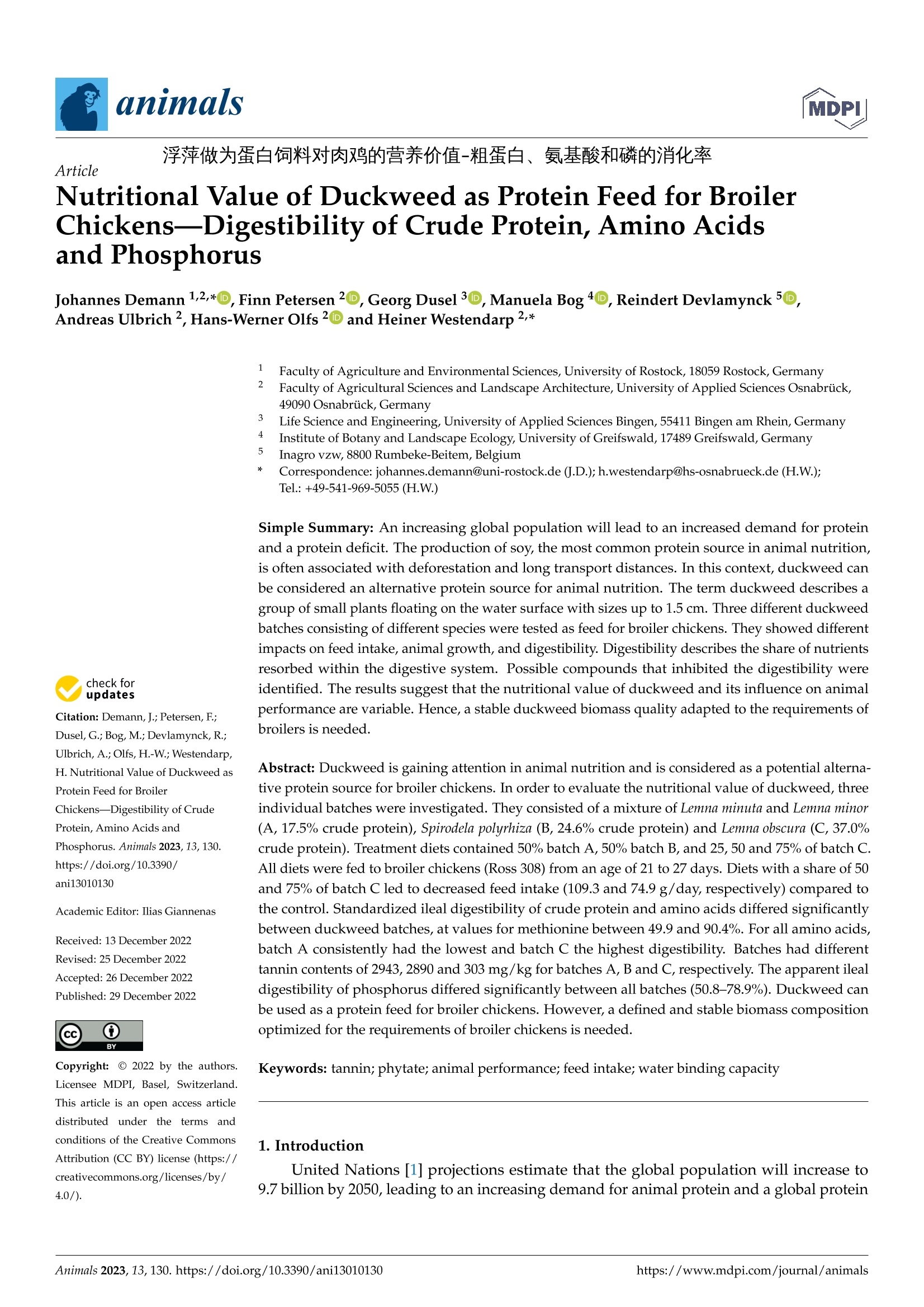
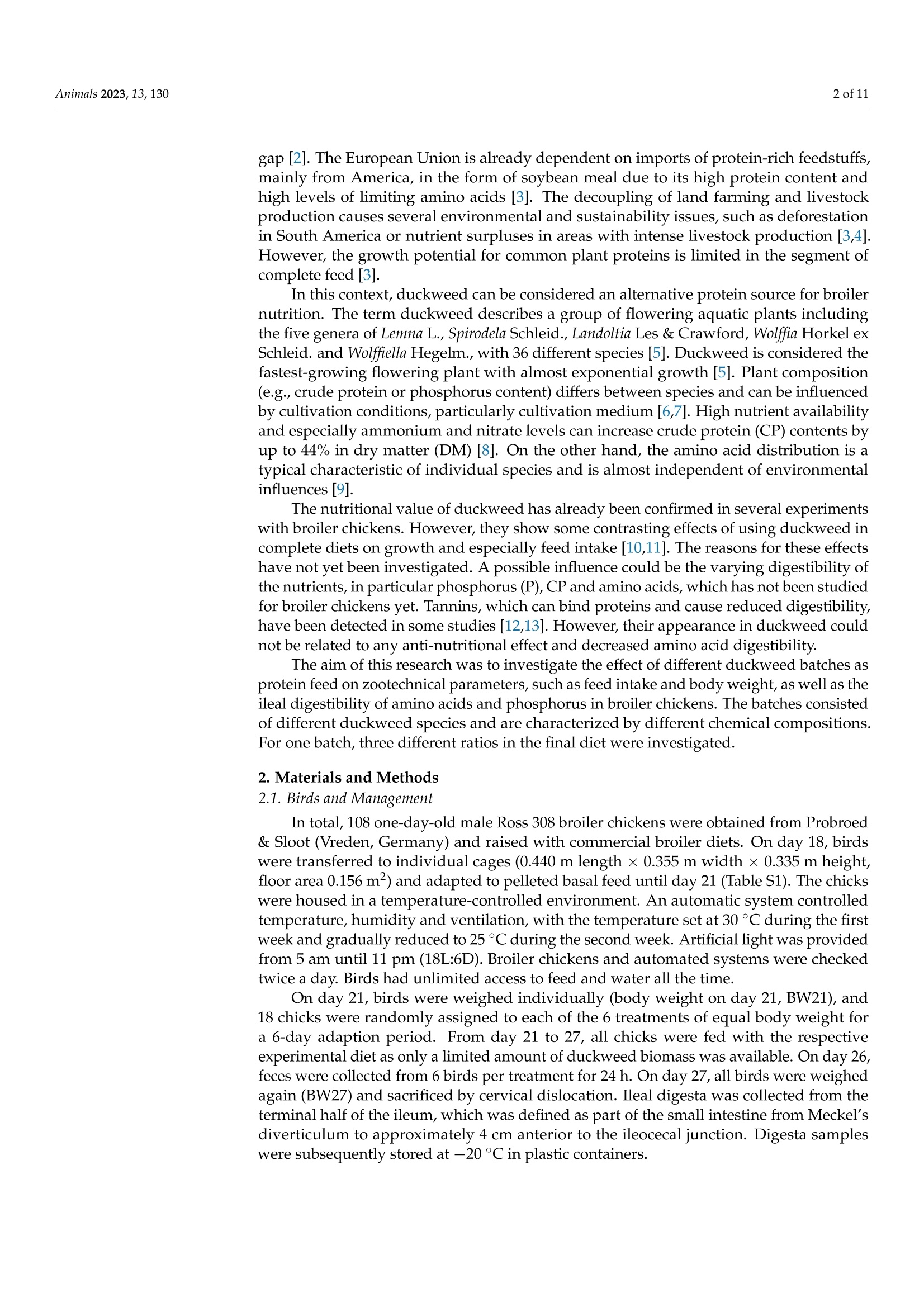

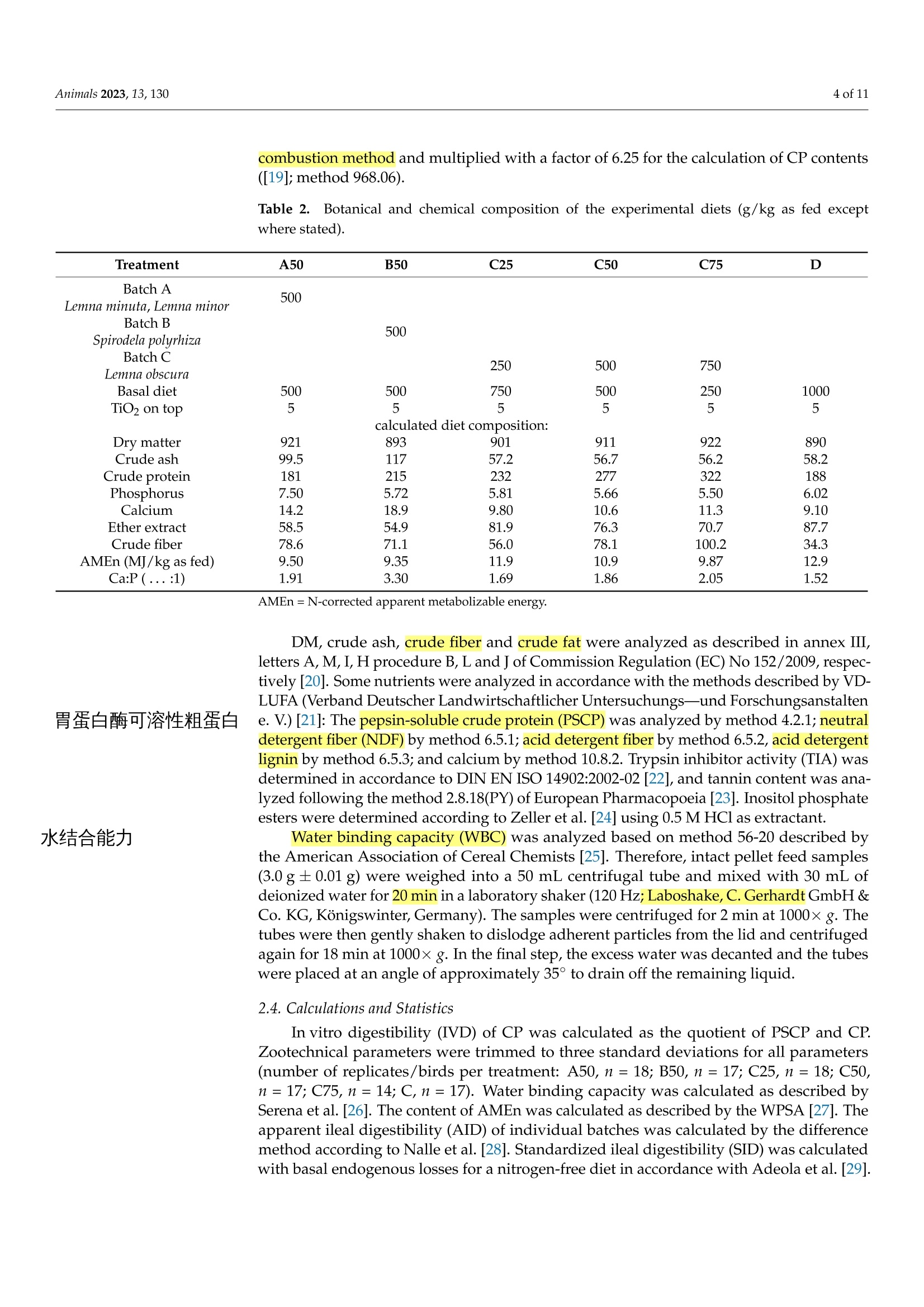

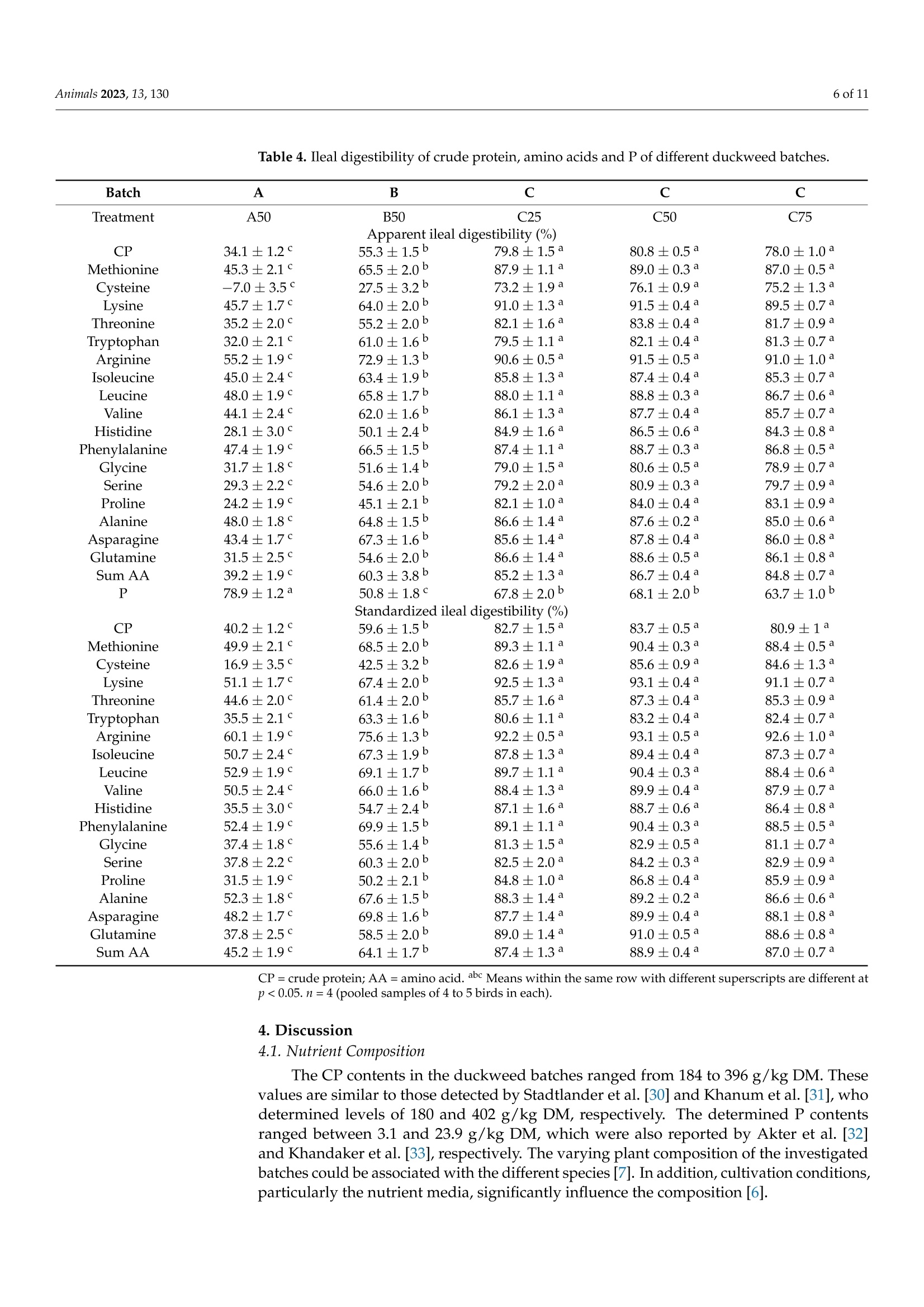
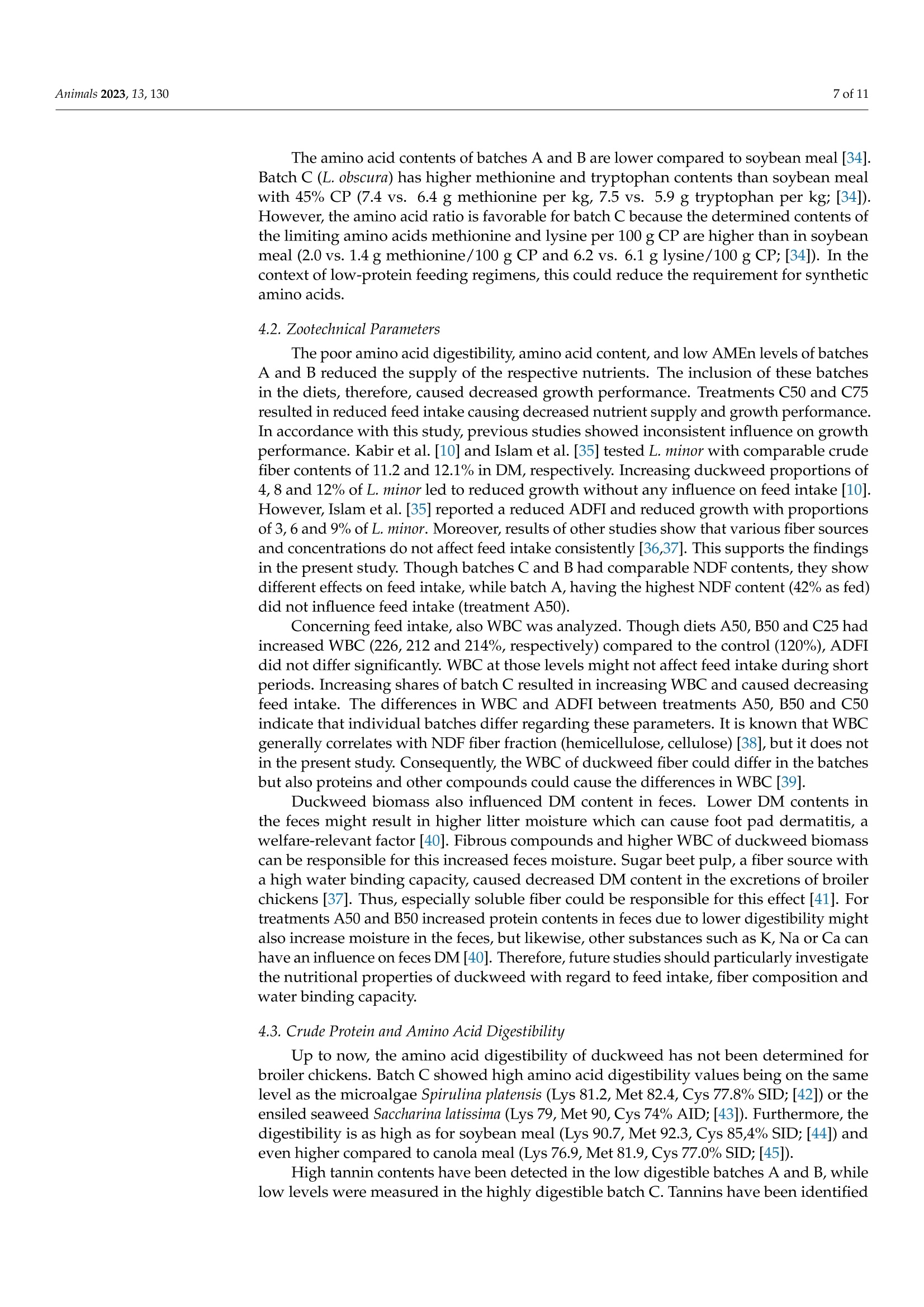
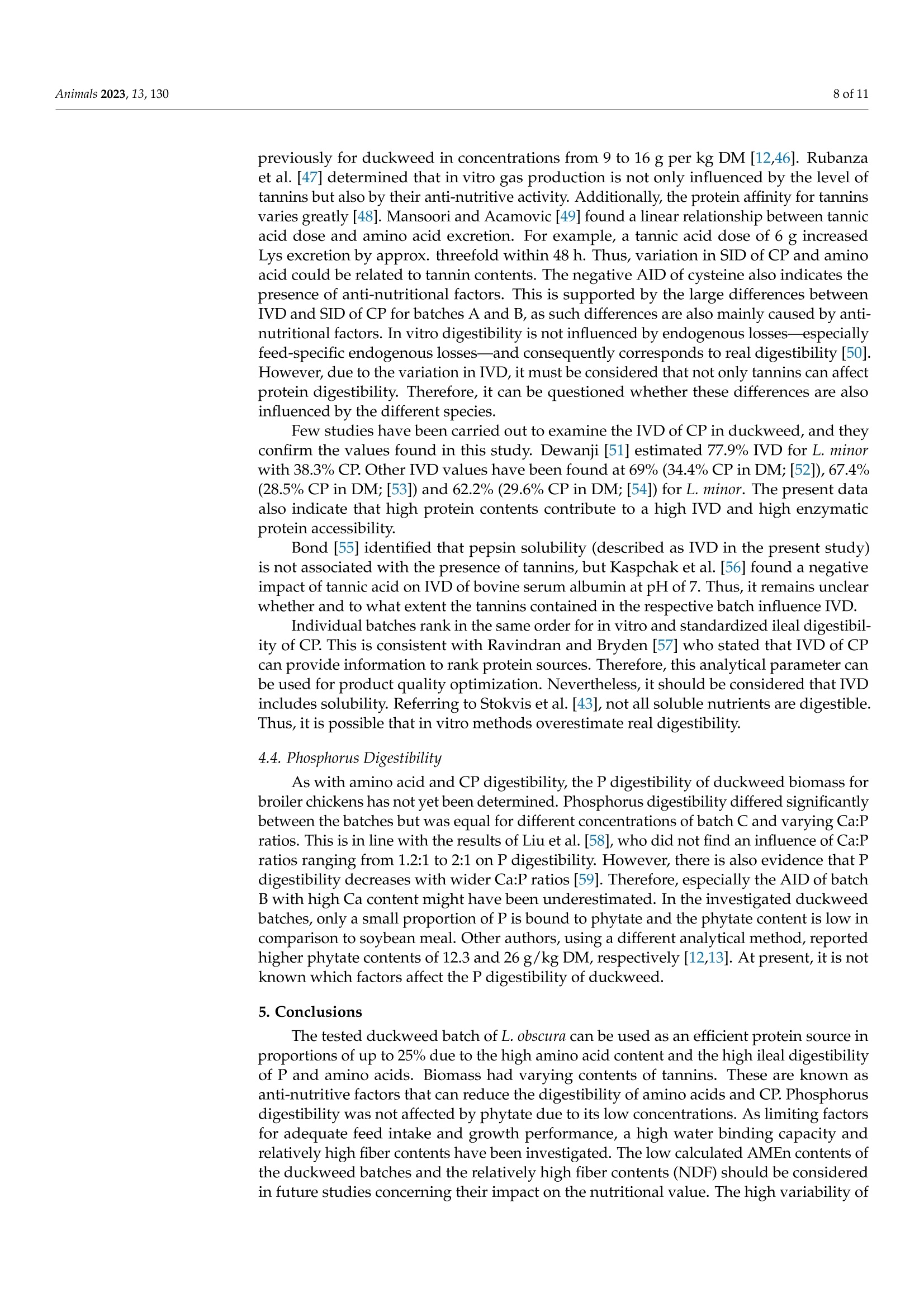

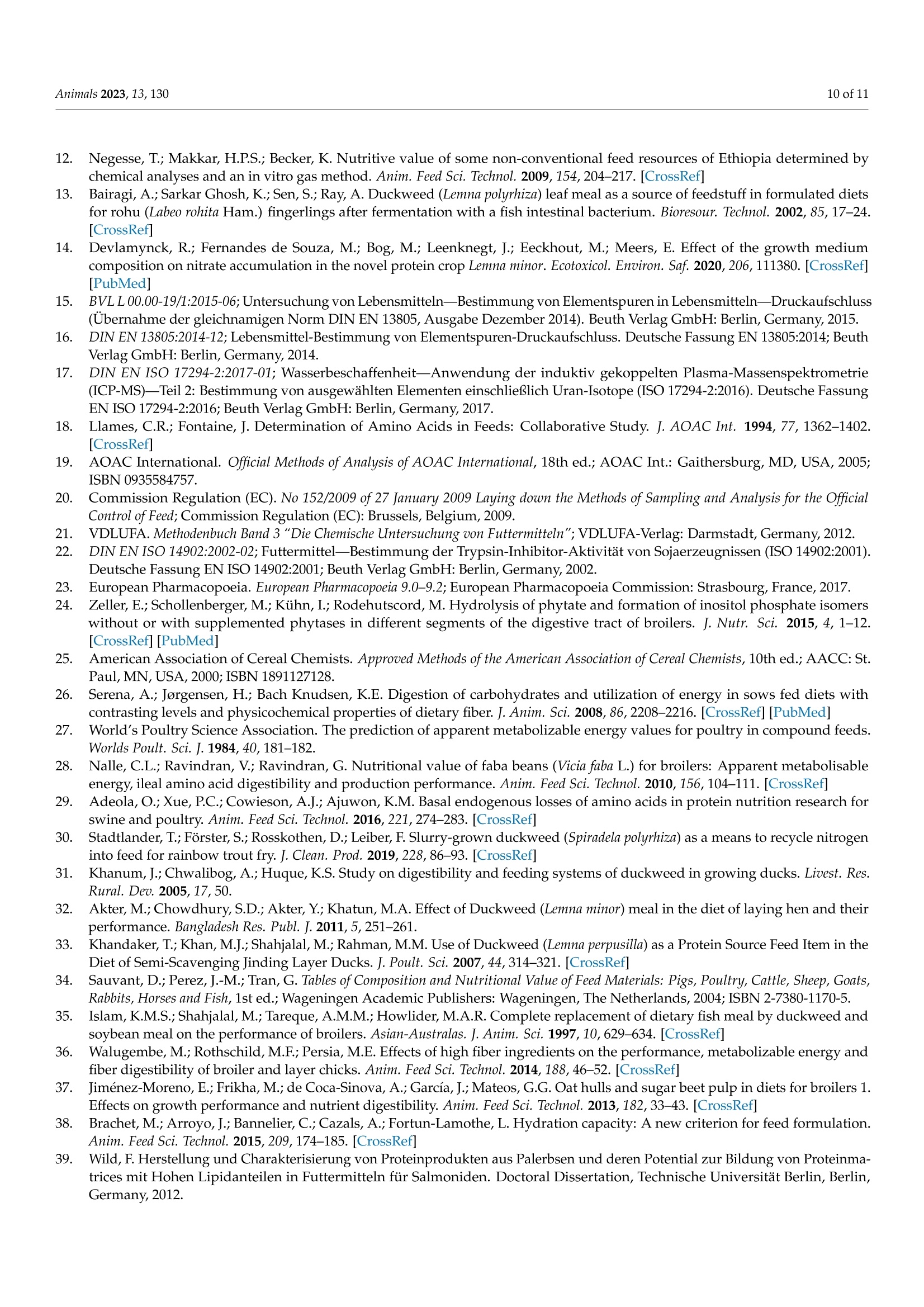
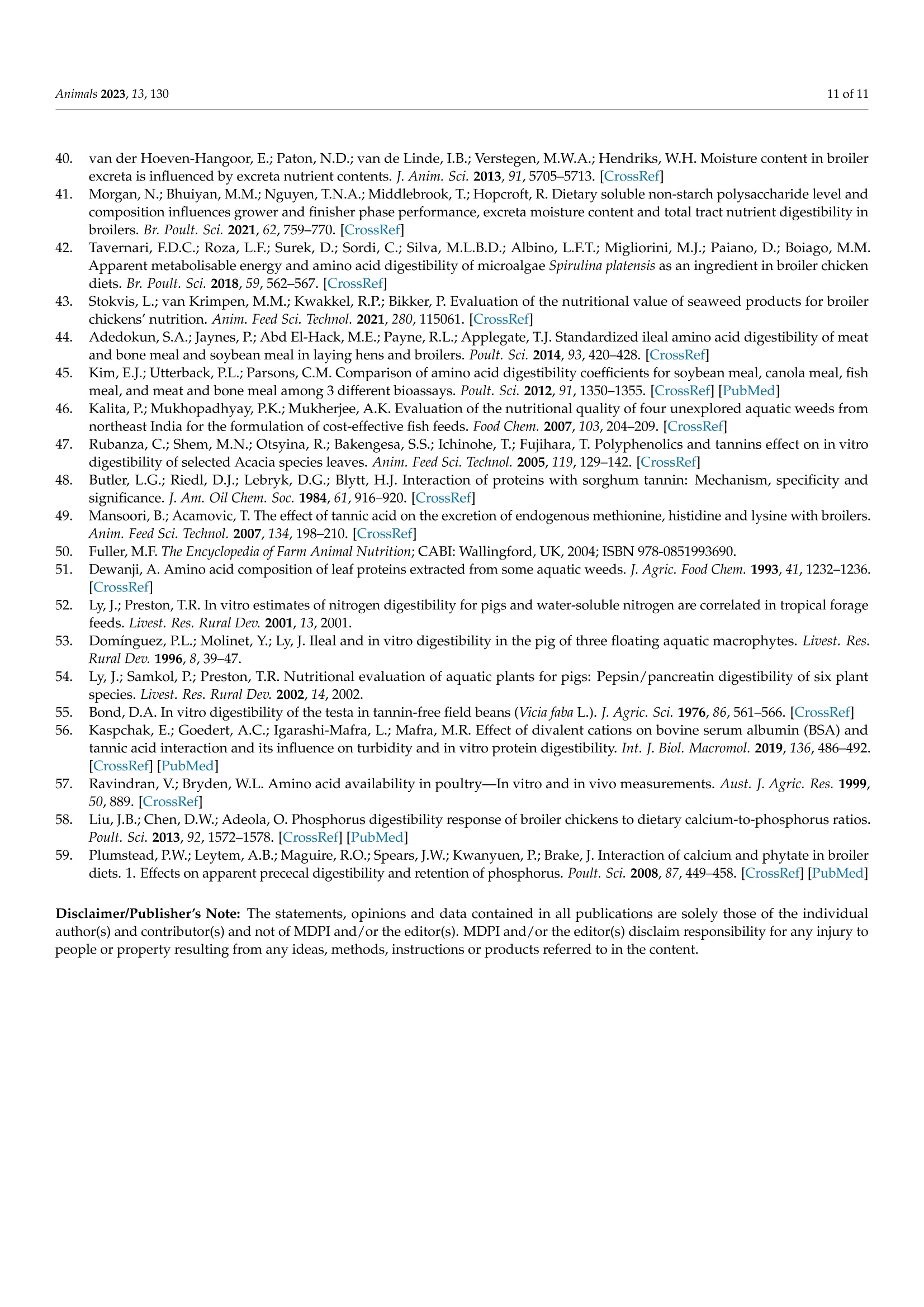
还剩9页未读,是否继续阅读?
中国格哈特为您提供《 浮萍蛋白饲料中蛋白质、脂肪、粗纤维中性洗涤纤维、酸性洗涤纤维、酸性洗涤木质素、胃蛋白酶可溶性粗蛋白、水结合能力》,该方案主要用于饲料中营养成分检测,参考标准--,《 浮萍蛋白饲料中蛋白质、脂肪、粗纤维中性洗涤纤维、酸性洗涤纤维、酸性洗涤木质素、胃蛋白酶可溶性粗蛋白、水结合能力》用到的仪器有格哈特杜马斯定氮仪DT N Pro、格哈特快速干燥仪STL56、格哈特全自动超级总脂肪测定系统、格哈特全自动型纤维分析仪FT12、格哈特强力高重现振荡器LS500/RO500、德国加液器MM、粗纤维分析滤袋
相关方案
更多
该厂商其他方案
更多

